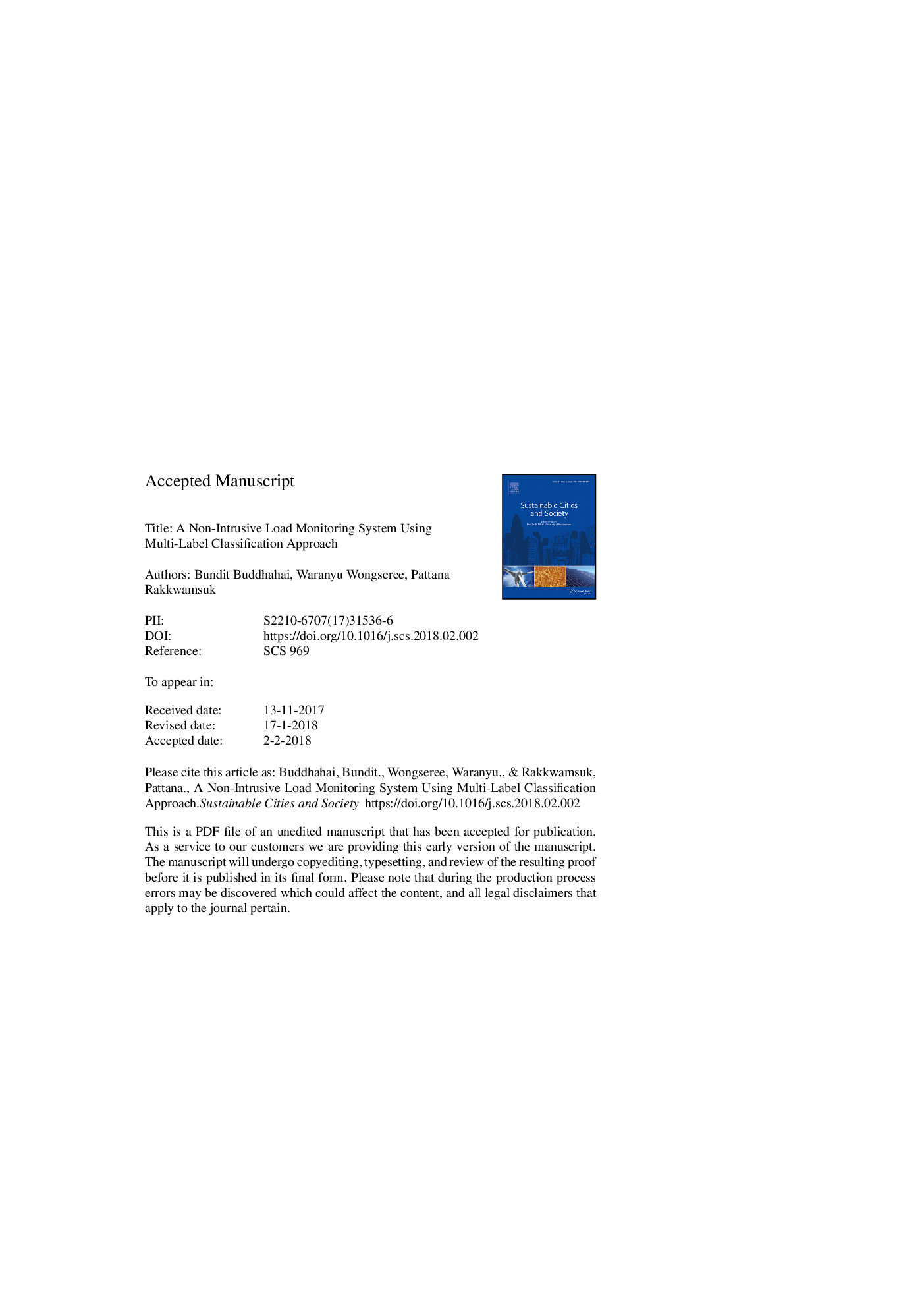| Article ID | Journal | Published Year | Pages | File Type |
|---|---|---|---|---|
| 6775465 | Sustainable Cities and Society | 2018 | 30 Pages |
Abstract
This paper proposes an experimental design process for the application of energy disaggregation using multi-label classification. The classification approach has recently shown to be a suitable representative model for treating data disaggregation in which the primary task is to identify or predict multiple load usage from aggregate data. The experiments were conducted by collecting basic electrical parameters from individual circuit branches of the load distribution in a house. Sets of data were analyzed through machine learning process to select the optimal set of parameters, learning algorithm and model parameter so that the system resulted from the learning process could deliver the optimal predictive performance for appliance loads. By taking the electrical parameters of current (I), real power (P), reactive power (Q), and power factor (PF) at every one-minute and employing RAkEL (RAndom k-labELsets) with Decision Tree as the multi-label classification algorithm together with the right model parameter configuration. F-score and prediction accuracy were evaluated as the predictive performance which found to be 97% and 99%, respectively, for high power appliances (water heater, Air-conditioner); 59% and 93%, respectively for lightings; finally, 75% and 92%, respectively for plug-outlet utilities.
Related Topics
Physical Sciences and Engineering
Energy
Renewable Energy, Sustainability and the Environment
Authors
Bundit Buddhahai, Waranyu Wongseree, Pattana Rakkwamsuk,
